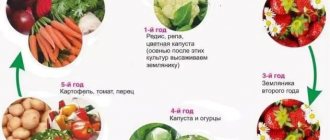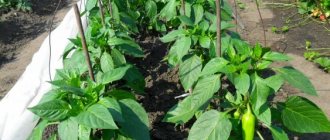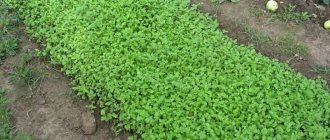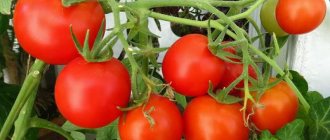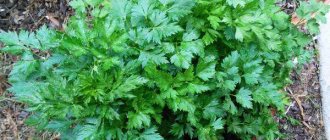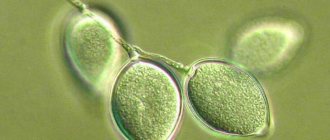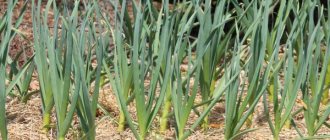Tomato crop rotation is an agrotechnical technology for obtaining a regular high yield. This is the alternation of tomatoes with crops of other families that do not suffer from the same diseases and pests, with different removal of nutrients from the soil.
When constantly planting tomatoes in one place, the yield drops by 30% or more. Dangerous phytotoxins accumulate in the soil, and it loses its physical and nutritional properties. With the right approach, crop rotation can be observed on any site, including in small greenhouses.
Basic principles of crop rotation and what to plant after beets
Beginning summer residents do not always know what to plant after beets or other vegetable crops to obtain a good harvest every year. How long can it take to grow other vegetables and which ones exactly after the beets have been harvested? Not everyone is familiar with the intricacies of organizing plantings on a plot, so amateur gardeners more than once encounter such problems as lack of harvest or low-quality fruits.
Beginning vegetable growers should first of all study and adhere to the rules of crop rotation. In fact, the right approach to planting vegetable crops contributes to many things:
- Growing a good harvest.
- Protect crops from diseases and pests.
- Maintains soil in excellent condition.
- Reducing the amount of chemicals and mineral fertilizers used.
Basic concepts and principles
Crop rotation is the alternation of crops in the garden. To get a consistently good harvest, you need to correctly draw up a crop rotation scheme! If some people think that they cannot cope with this task, then they are mistaken. To correctly draw up a scheme, it is enough to know the basic principles of crop rotation, which clearly explain which vegetables can be planted after which crops
The most important rule: It is not recommended to plant plants from the same family in the same place, but there are still exceptions. It is also not advisable to plant crops with the highest nutrient requirements ahead of those with lower nutrient requirements. Dividing plants according to their level of nutrient needs:
Dividing plants according to their level of nutrient needs:
- High level – potatoes, zucchini, cabbage, spinach, celery, pumpkin. A special feature of crop rotation is potatoes and cabbage - these crops can be grown in one place for several seasons in a row.
- Medium level - cucumber, melon, radish, eggplant, tomato, beets, carrots.
- Low level – bush beans, onions, radishes, lettuce.
Therefore, what to plant after beets can be calculated based on this list.
Crops that can be planted after beets
It must be said right away that in any case, you need to give the earth a rest and also fertilize it. Table beet belongs to the goosefoot family. It is unpretentious and grows well in soils rich in minerals. The main requirement of beets is good watering.
Potato
So, after the beets, you can plant potatoes. It grows quite well in any climatic conditions. To grow a good harvest, potatoes need to be planted in loose soil with normal water conditions.
Garlic
After the beets, you can plant garlic. This plant loves light very much. Most often it is grown in separate beds, but if there is not enough space, garlic can be planted with other crops. Strawberries, onions, potatoes, tomatoes, and raspberries will be excellent neighbors. Some flowers also prefer the proximity of this culture - roses and tulips.
Tomatoes
Tomatoes can also be planted after beets. Before planting tomatoes, you need to prepare the soil well, that is, it needs to be fertilized. Peat and humus are suitable as soil amendments.
Carrot
An excellent vitamin-rich vegetable that germinates well after beets. Carrots love moisture and sun, however, in moderation. It can be planted not only after beets, but also tomatoes, cucumbers, onions, and cabbage.
Beautiful purple, white eggplants can also be grown if beets were used as a predecessor.
Cucumber, pumpkin, zucchini
These unique vegetables can be planted after beets, but you must first fertilize the soil very well.
To always get a good harvest, you need to draw up a table in which the garden must be divided into sectors indicating the names of the crops planted this season. And next year, use this tip when planning the placement of vegetables, fruits, and flowers.
Basic information about the culture
Tomatoes belong to the nightshade family; in South America, where they come from, wild varieties of this plant are common. The vegetable came to Europe in the mid-16th century, to Russia 200 years later and was used as an exotic plant, and was considered extremely poisonous. In European countries, tomatoes were also considered poisonous, and only thanks to the work of the Russian botanist Andrei Timofeevich Bolotov, who was able to develop methods for ripening fruits, this species began to be used for cultivation for food purposes.
Tomato fruits
The fruits, depending on the variety, have different sizes, shapes and tastes. Tomatoes have gained a strong position in the cuisine of different nations; it is simply impossible to imagine some national cuisines without them, for example, Italian. They are consumed raw in salads, added to soups and stews, stewed, pickled, juices and sauces are made.
The popularity of this species is due not only to its unique taste, they contain many essential vitamins, microelements and have low calorie content, which is in demand nowadays. Systematic consumption of vegetables helps prevent hypertension; the high content of coarse fibers promotes the functioning of the gastrointestinal tract and cleanses the body of toxins, and reduces the likelihood of developing cancer.
Due to their excellent taste, variety of uses for food purposes and the presence of vitamins and microelements, tomatoes are grown in our country from the southern regions to the northern latitudes. However, not everyone and not always succeed in getting good harvests; this crop requires attention, knowledge of the peculiarities of agricultural technology and hard work.
Planting tomatoes
The popularity of tomatoes in our country is so great that they are grown in all regions of the country where they cannot be grown in open ground; they are grown in greenhouses, greenhouses, and indoor conditions.
Planting tomatoes
Considering the region of origin of vegetables, it is clear that they are a heat-loving crop.
The plot of land for planting is chosen to be well-cultivated, with loose, fertilized soil. Before planting tomatoes, it is possible to place any crops on the site, except those belonging to the nightshade family, such as potatoes. Also, do not forget that not every crop can be planted after tomatoes if you are counting on getting a harvest.
Tomatoes are planted when the soil warms up to 10 degrees. Choose an open sunny area for planting; tomatoes are very responsive to sunlight. You can plant tomatoes in any soil, but it is preferable to choose loose, fertile, well-warmed soil.
The land for planting is prepared in the fall, cleared of the remains of dry plants, dug up, fertilizers are added, humus in the amount of 4 kg per square meter and superphosphate, 70 g. Tomatoes are demanding and responsive to feeding. Nitrogen fertilizers stimulate the growth of green mass; the development and ripening of fruits is promoted by phosphorus and potassium fertilizers. You should not overuse fertilizers.
Preparing the soil in autumn
After what crops can carrots be planted?
Carrots themselves are a vegetable crop that does not require special attention, but you still need to know certain nuances in this area.
In the field of agriculture, there is such a term as “crop rotation”. It means the correct rotation of rural crops in the beds for subsequent years. Using this rule in practice, scientists have determined that if a plant is planted correctly, it will be less susceptible to diseases, pests will not attack it, and the fruits themselves will always be large and juicy. There is a principle that says that a certain crop cannot be planted, for example, near potatoes, while others may not tolerate onions. All these nuances exist and need to be taken into account.
After what can I plant carrots? Carrots are one of those plants that are not very fond of predecessor crops, so they have few of them. Let's look at everything:
- First of all, experts highlight onions;
- a good crop for planting carrots is the tomato;
- potato;
- salad;
- cucumbers, but only after two years.
This pattern is justified by the fact that by following this rule, it is possible to distribute all nutrients as evenly as possible throughout the soil. Even an inexperienced person who has a garden should know after which plants carrots should be planted.
It is also worth knowing information about the inadmissibility of planting carrots after certain plants. The worst plant that can be compared to carrots is parsley:
- It is after such a crop that the soil weakens, and conditions are created in it under which various types of pests develop quite well, including the carrot fly, which is very harmful to carrots. Such pests have a detrimental effect on carrots, so it is worth looking for a slightly different place to plant such a crop.
- If you have no other place to plant carrots, but still need to sow them, then there is a way out. The place where you are going to sow carrots, and where parsley was previously, must be thoroughly loosened with a hoe.
- Next, the soil needs to be watered with a solution of potassium permanganate in order to kill all pests. This process must be carried out right before sowing carrots, and it is best to do this in advance in the fall. Such so-called manipulations will reduce the incidence of plant diseases and improve the growth and appearance of the fetus.
What can you plant next to carrots?
An important point when placing plantings in the garden is the compatibility of different plants. They can either oppress each other or support each other (for example, in pest control).
Find out when to remove carrots from the garden for storage.
When choosing suitable neighbors you should consider:
- plants grown in the same bed should require the same care;
- crops should not compete for the same nutrients;
- should not have common diseases and pests.
- The following crops are considered useful companions:
- Everyone knows that onions repel a pest called carrot fly from carrot plantings. But not everyone knows that tobacco, sage or rosemary can also cope with this;
- legumes (peas and beans) make the soil loose and enrich it with nitrogen;
- you can plant greens nearby (for example, lettuce), which will quickly ripen and free up space, and large leaves will immediately cover the ground and help retain moisture;
- spinach will also shade carrot plantings from the sun;
- tomatoes, radishes, cabbage and radishes are also good neighbors.
- The following should not be placed next to carrots:
- beets or horseradish, which will compete;
- dill, celery and other umbelliferous plants that attract common pests;
- It is not recommended to plant root crops next to apple trees - such proximity worsens the taste of the fruits of both crops.
Did you know? The Portuguese make jam from carrots and sell them to Europeans. According to the law, jam is prepared only from fruits, so they consider carrots not a vegetable, but a fruit.
What to plant in one bed: mixed plantings
The question of how to compact pepper or tomato plantings is even more complicated. It is known that joint planting is widely used by gardeners: they allow, for example, more efficient use of space, and many combinations of vegetables are so favorable that they increase productivity. Classic planting of onions and carrots in the same bed, for example, allows you to drive away both the carrot fly and the onion fly from the bed.
There are many reference tables available to make communal planting easier.
When grown in open ground, you can plant a small amount of basil or asparagus in a tomato or pepper bed: they drive away harmful insects from nightshade crops. Basil also helps tomatoes ripen a little faster. Sage or calendula planted nearby combat pests well. Even a weed like nettle is useful when growing tomatoes.
Planting radishes or various salad crops next to peppers or tomatoes will not cause any harm. And mint or lemon balm even improves the taste of tomatoes. The tomatoes themselves will help crops that are often attacked by aphids, such as zucchini or pumpkins. Although, of course, we are talking here not about one bed, but about neighboring ones. If you want to compact the tomato or pepper plantings, you can plant some onions, garlic, carrots or beets between them.
In a greenhouse the question is even more complicated: there the microclimate is the same for all vegetables planted in it. As a rule, peppers and tomatoes are planted side by side in greenhouses. Is it good? Yes OK. Tomatoes save peppers from aphid invasion (after all, they penetrate into the greenhouse). Both crops have similar growing conditions. The bushes can even be tied to the same common trellis. You can plant several pea bushes along the edge of the bed.
But the joint planting of cucumbers and tomatoes (peppers), which gardeners often practice, cannot be considered useful. These vegetables will not interfere with each other in terms of releasing any toxicants, but they need different living conditions and, above all, air humidity. Cucumbers do not like drafts; the best humidity for them is 80–90%, while for peppers or tomatoes it is best to create 50–60%. Joint planting can lead to a significant reduction in yield.
When planting cucumbers and tomatoes together, it can be difficult to create the desired microclimate
The eggplant is also a bad neighbor: it needs higher temperatures, and humidity too, as well as a lot of sunlight, from which tall tomatoes can obscure the blue ones. These crops also have different needs for water. If it is necessary to plant all the listed heat-loving vegetables in one greenhouse, their correct arrangement must be observed. Cucumbers are planted on the north side of the structure, and further to the south - according to the height of the plants (and this also depends on the variety). The shortest bushes are planted on the south side so that they do not block taller plants from the sun.
What to plant next to tomatoes
It is important not only what crops to plant after, but also what to plant next to it.
Spicy herbs can be good neighbors for tomatoes:
- Asparagus;
- Basil;
- Coriander.
- Fragrant flowers and plants will also be beneficial for the vegetable. You can plant nasturtium, marigolds, marigolds or tansy between the beds of tomatoes.
Both flowers and herbs are good at repelling harmful insects.
- Neighborhood in the garden with radishes and garlic will protect the tomatoes from spider mites.
- And planted onions can be protected from flea beetles and aphids.
You may be interested in: How to plant an avocado seed at home
Also, both onions and garlic reduce the risk of late blight.
- Mustard and calendula are also good crops to plant next to tomatoes.
Dangerous neighbors for tomatoes can be:
- Beans. They shade the tomatoes too much, although they enrich the soil with nitrogen.
- Corn. As it grows, it creates a large shadow, which prevents the tomatoes from developing normally and the fruits from singing. Productivity is falling.
- Dill. These seemingly harmless greens take too many nutrients from the soil.
Crop rotation in the garden: why do you need to alternate crops?
Some vegetables and berries are planted in the carrot bed in the spring. Carrots are returned to their previous place only after 3-5 years, otherwise the new crop will suffer from diseases and the root crops will be small. In addition to infections, harmful insects that love carrots may remain in the soil.
There are vegetables and berries after which it is strictly forbidden to plant carrots. They deplete the soil and infect it with pathogenic microbes. Often these are the same root crops, related plants. They are susceptible to the same diseases and consume similar nutrients as carrots.
You can use a five-field crop rotation, it lasts 5 years. Five different plants are planted in five beds. In the new year, they are replanted in a circle: instead of the last crop, the first is planted, instead of the first, the second, and so on. It is better if root vegetables are alternated with plants that use the ground part, for example, cereals, legumes or herbs. The carrots will be in the same place only in the fifth year.
If the bed has been fertilized with manure, then carrots cannot be sown in this place; the crops may die. It is better to fertilize the soil for planting carrots with humus.
What to plant before tomatoes
Tomatoes most need potassium, phosphorus and nitrogen. Accordingly, the soil for growing them must be rich in these microelements. Poor predecessors for tomatoes are potatoes, peppers, peas, physalis, and eggplant. Also, you cannot plant tomatoes for more than 2-3 years in a row in the same bed.
As for good predecessors for tomatoes, they are:
- any cabbage (white cabbage, cauliflower, etc.);
- pumpkin crops (pumpkin, zucchini, squash, cucumbers, melon);
- turnip;
- carrots and beets;
- green onions and green manure herbs.
Latest articles for gardeners, gardeners and flower growers
Aconite whitemouth herbaceous plants for open ground Winter onions planting in autumn Frost-resistant grape varieties for Central Russia without shelter Varieties of tomatoes resistant to late blight for open ground
In the beds where tomatoes have been grown for 4-5 years in a row, cabbage and pumpkin crops are planted, after which the tomatoes produce good yields. If the place where tomatoes are planted changes at least once every 2 years, then you can choose any of the above crops.
Then plant tomatoes
The question of what to plant tomatoes next arises for every second gardener. The best predecessors for tomatoes are considered to be crops from the pumpkin family. These include cucumbers, zucchini, pumpkin, and squash. When planting them, manure is used. In the second year after adding organic matter, the soil will be ideal for growing tomatoes.
Tomatoes grow well in open ground even after early varieties of cabbage, as well as turnips and beets. Onions, garlic, and herbs can be good predecessors for tomatoes when planting.
Dangerous predecessors of tomatoes
You cannot plant tomatoes after representatives of the nightshade family. Tobacco, potatoes, eggplants and other similar crops have the same diseases. The soil may become contaminated and then the planted tomato seedlings will simply die.
If you plant tomatoes after garden strawberries or strawberries, they will not receive the required amount of nutrients they need for development.
When is it time to change the place where you plant tomatoes?
Tomato loves easily warmed up, loamy soil, loose and with good permeability; it is not picky about acidity. Ideally, you need to replant tomatoes to a new place every year.
But some owners leave them in the same garden for several years, resorting to little tricks to preserve the harvest:
- changing the top layer of soil in the garden bed (it can be moved to where you plan to grow radishes - they grow best after tomatoes);
- application of nitrogen fertilizers;
- the right choice of crops for the beds adjacent to tomatoes - legumes and fragrant herbs;
- planting tomatoes according to Kizima’s method, in a cellophane wrap with the formation of a deep root;
- autumn planting of legumes and mustard crops after removing tomato bushes.
You can do this for up to three years. But sooner or later you will have to think about optimizing crop rotation. A sign that it is time to change the location of the tomato dislocation are diseases that affect tomatoes.
Under conditions of nutrient deficiency, ovaries form poorly and tomato fruits become smaller. The risk of infection of the site with late blight, a fungus that lives in the soil and is carried by parts of tubers and roots, is growing. Moreover, in a greenhouse these processes proceed faster than in open ground.
If you ignore these signals, you may be left without a harvest - the soil is gradually depleted.
When cleaning your garden in the fall, try to completely remove the stems and rhizomes of plants from the beds.
Latest articles about gardening
How to fight slugs in the garden using folk remedies? How to fight carrot flies using folk remedies How to grow tomato seedlings in a greenhouse?
What soil and growing conditions do tomatoes need?
Lighting
Tomatoes are a heat-loving and light-loving vegetable crop.
During the period of fruit ripening, the plant requires bright, intense lighting, otherwise the fruits will be less tasty.
- The seeds of this vegetable plant can germinate at a temperature of at least +14°C, but at higher temperatures (within 20-22°C) sprouts appear faster.
- And the growth of adult plants begins to slow down at temperatures below +12°C; shoots stop growing completely when the thermometer drops below +9°C.
Air humidity
The next requirement is optimal air and soil humidity.
Increased air or soil humidity can lead to the development of various fungal diseases, root rot, and blackleg. Some of these diseases cannot be cured, so the plants have to be destroyed.
Fertilizer
Tomatoes also require nutrients; plants can only obtain them from the soil. Therefore, the beds in which tomatoes will grow must be pre-fertilized.
- In the fall, when digging, organic matter (compost, humus, manure) is added to the soil at the rate of 10 kg per square.
- In the spring, when digging again, complex mineral fertilizers are added to the soil, and then beds are formed in which tomato seedlings will be planted.
Rating of the TOP 7 best furniture staplers for the home: which one to choose, reviews, price
And then the seedlings are fed with a solution of complex mineral fertilizers twice before they are transplanted into open ground.
After transplanting the seedlings into the beds during the flowering period and the formation of ovaries, the growing bushes require potassium and phosphorus.
These minerals contribute to:
- active flowering;
- the appearance of a large number of ovaries;
- strengthening immunity.
As a result, tomato bushes develop faster, a larger number of ovaries are formed, and the plants themselves practically do not get sick, which also has a positive effect on the yield of this vegetable crop.
Effect of nitrogen on tomatoes:
- This macronutrient has a beneficial effect on any cultivated plants.
- Activates the growth of vegetative mass and root system.
But it must be introduced into the soil with caution. An excess of nitrogen leads to increased development of green mass to the detriment of flowering and fruiting, and a deficiency leads to slower growth, lightening of the foliage, and the fruits will be too small.
Priming
The best types of soil for this vegetable crop are sandy and loamy with a neutral or slightly acidic reaction.
Under such conditions, the first fruits on tomato bushes can ripen 1-1.5 months after the flowers appear.
What to plant after tomatoes next year and this season
Every gardener wants to get good harvests every year. Therefore, it is imperative to monitor crop rotation on the site and not plant related crops in the same bed every year. What can you plant in former tomato beds?
What can be planted after tomatoes next year, and what should not be planted?
Solanaceous crops can be planted in former tomato beds located in open ground no earlier than after 3 years. That is, neither tomatoes, nor potatoes, nor peppers and eggplants can be planted in these beds, especially if the tomatoes suffered from late blight.
It is best to plant some root vegetables: radishes, beets, carrots, turnips, rutabaga, daikon - they take nutrition from the deep layers of the soil and will not lack microelements.
Garlic and onions will improve the soil well, and legumes - beans, peas, beans, soybeans - will enrich the soil with nitrogen and organic matter, which is why they are considered the best plantings after tomatoes.
Planting zucchini, cucumbers, and pumpkins can also be a good option, but you must add a couple of buckets of organic matter - compost or rotted manure - to the tomato bed.
Various herbs, salads, and all types of cabbage feel great in former tomato beds.
The crop rotation table will help you choose the optimal crops that can be planted after tomatoes
What can be planted immediately after harvesting tomatoes in the fall, including in a greenhouse
In a greenhouse, tomatoes are often planted constantly in the same place, because the area of the greenhouse is limited - it is unprofitable to plant root crops in it for several years in order to maintain crop rotation. Therefore, to improve the health of the soil, planting green manure is used - green plants, which, with their root secretions, suppress diseases, heal the soil and enrich it with useful microelements.
After tomatoes, it is best to plant mustard, rapeseed, and oilseed radish, and they can be sown in an unharvested garden bed from the end of August until October. Both vetch-oat mixture and winter rye are suitable for healing the soil.
Video: green manure before and after tomatoes
Only properly organized crop rotation will help you obtain strong and healthy tomatoes every year in the open ground or in a greenhouse.
Consecutive planting helps restore soil
The basic rule that a gardener should know is that you cannot constantly plant a plant in the same place. Any crop can be returned to its place only after a few years, during which time the land is restored and enriched with necessary microelements and nutrients. But there are some exceptions to this rule. The place for planting potatoes, tomatoes, beans and strawberries can not be changed for 4-5 years.
The second rule is crop rotation. In order for the soil to have a good rest, but not to stand idle, it is recommended to alternately plant plants with deep, medium and shallow root systems. Thus, the plantings select beneficial substances “layer by layer”, giving the layers located above or below the opportunity to fully recover.
So, for example, after tomatoes or potatoes, which have a medium-developed root system, it would be good to plant root crops that take microelements from the deep layers of the soil, or crops that feed in the upper layers (cabbage, cucumbers or zucchini).
To replace beds with garden strawberries, knowledgeable gardeners plant “deep” legumes, carrots and beets. For the next season - “superficial”: zucchini, pumpkin, cucumbers. And then they complete the recovery period with onions and tomatoes. After such a break, you can safely return the strawberries to their original place.
But garlic and onions are universal plants. They can be planted before any vegetables and after any crops. However, you should not sow onions or garlic in the same place twice in a row.
And third. Areas where crops were sick and susceptible to pest infestation must be planted with plants that are resistant to these diseases or that sanitize the soil. As a rule, related species are prone to the same damage, for example potatoes and tomatoes, cucumbers and zucchini.
What can't be planted after tomatoes?
The following crops should not be grown in the place where the tomatoes were planted:
- other or similar varieties of tomatoes;
- potato;
- tobacco;
- physalis;
- strawberries;
- strawberries;
- eggplants.
There is another argument against planting these crops on the former site of tomatoes. The fact is that tomatoes make the soil more acidic, and in such an environment the listed plants cannot fully grow, develop, and most importantly, bear fruit. Because of this, crops planted in the wrong place either die or produce a poor harvest.
What can be planted after tomatoes from melons? The answer to this question is clear: nothing. This is due to the fact that watermelons, melons or pumpkins planted in a former tomato area will bear fruit poorly, and the summer resident will receive a very modest harvest.
Many summer residents plant bell peppers next to tomatoes. It is not recommended to carry out such planting in a bed where tomatoes were previously grown for only one reason: the yield of bell peppers may be reduced significantly. If such a prospect does not frighten the gardener, he can plant this plant crop in place of tomatoes without fear of the bush being damaged by diseases or pests.
After tomatoes, it is undesirable to plant crops belonging to the nightshade family, since they have the same pests and diseases, and a sincere love for nitrogen, which can lead to soil depletion:
- eggplant;
- potato;
- pepper;
- physalis;
- pepino;
- nightshade;
- tobacco;
- petunia;
- watermelon;
- melon.
It is not advisable to plant tomatoes after related crops, since they all absorb almost the same substances from the soil, depleting it:
- potato;
- sweet and bitter peppers;
- physalis;
- mandrake;
- dope;
- tobacco;
- nightshade;
- Brugmansia.
And also after strawberries and strawberries, they can infect tomatoes with the same fungi that remain and overwinter in the soil.
Tomatoes are not planted after plants of the same family. They are susceptible to the same diseases and pests, and have similar root secretions that are toxic to followers. Over the course of a season, a certain supply of pathogens accumulates on the site and the permissible threshold of pests increases. These are all nightshade crops:
- potato;
- eggplant;
- vegetable pepper;
- tobacco;
- physalis.
By that time, the soil is greatly depleted, it contains many small roots and root secretions. In addition, the crop has a common disease with tomatoes - late blight. For the same reason, it is advisable not to place them in adjacent beds. The area after the strawberries is sown with legumes or green manure crops; tomatoes are planted only the next year.
| Legumes They saturate the soil with nitrogen, so they are great after tomatoes, which consume a lot of this microelement. For the same reason, legumes are good precursors to tomatoes. plant any options without restrictions | |
| Cabbage Doesn't use the same nutrients as tomatoes. It is indifferent to the level of nitrogen in the soil and is not affected by tomato diseases. You can plant any variety of cabbage. All of them are equally suitable for use after tomatoes. | |
| cucumbers They grow normally after tomatoes. They are not affected by nightshade diseases and pests. Before planting, the bed is fed with organic matter. Cucumbers need a lot of nutrition, so fertilizer is always applied to them | |
| Zucchini, squash, zucchini All such crops grow well after tomatoes. And they are also good as predecessors. You can plant without fertilizing, but it is better to apply complex or organic fertilizer. | |
| Beets and other root vegetables These crops have deep roots and feed from the lower part of the fertile layer. Therefore, they have enough nutrition after tomatoes. You can plant any options: beets, carrots, radishes, radishes, turnips and many others | |
| Garlic and onion These plants are natural soil orderlies. They disinfect the soil and kill pathogenic bacteria and pest larvae. At the same time, they consume few nutrients. Great for planting after tomatoes. They heal the soil and destroy spores of fungal diseases that often damage tomatoes. | |
| Green crops They use other nutrients, and the need for them is small. They grow well after tomatoes and give good yields. You can use any options: lettuce, celery, parsley and much more. | |
| Green manure Great follower for any culture. Saturates the soil with useful substances and enriches it very quickly. It is best to sow immediately after harvesting tomatoes. The greenery grows until the cold weather, then the surface is dug up. In the spring, you can plant other crops in the garden, and they will give a good harvest. |
Growing in greenhouses
Plants are similar in their natural composition and equally love nitrogen fertilizers. The soil after potatoes is depleted of nitrogen and, even if it is possible to plant tomatoes, for normal growth you will have to create an intensive fertilizer application schedule. Since it is almost impossible to uniformly fertilize every area of soil in one season, overdoses are possible, which will negatively affect the quality of the fruit.
As for various parasites or bacteria, most of them love both tomatoes and potatoes equally. At the end of the season, many fruits from potatoes simply remain in the ground. The human factor takes its toll: it is almost impossible to sift the soil for small fruits or parts thereof.
Parasites or bacteria live quietly in the remaining fruits and soil, which will enthusiastically welcome the change in menu in the coming season. In this case, you can’t expect to get good tomatoes after potatoes.
Precious time for every farmer will be spent fighting the negative consequences of the decision made. It is best to anticipate all the risks in advance when changing the location of planting tomatoes and choose the best place.
What parasites can interfere with farmers:
- Colorado beetle. Not long ago, an overseas guest expanded his sphere of influence and lives in areas where he had not previously met. He still loves potato leaves, but he also enjoys eating tomato tops.
- Medvedka. It prefers moist soil and does well on both potatoes and tomatoes. It digs small holes in the ground and feeds on the stem of the plant.
- Wireworm. It gnaws through crop stems and ready-made fruits. Visually, the result of the work of this common enemy of all farmers is observed in the form of blackened holes along the diameter of the pest’s body.
As for fungal diseases, the common enemy is late blight. Affects the stems and foliage of plants. Gradually spreads to the fruits and leads to significant loss of them. If you see dark black spots on the tops and fruits, then most likely the diagnosis is obvious.
The optimal soil for planting tomatoes is sandy loam or light loam with neutral acidity and average fertility. Tomatoes do not like acidic soil. The bed for tomatoes is prepared in advance - at the end of summer or autumn. Organic fertilizers are added to the soil by digging them onto the bayonet of a shovel. This will improve the structure and fertility of the soil before planting. But when planting seedlings, fertilizers are still added to each hole.
The acidity level of the soil can be determined by the plants that grow on it. The soil is acidic if the following grows next to the site:
- horse sorrel;
- bush knotweed;
- horsetail;
- large leaf plantain.
Weeds such as spreading quinoa, lanceolate plantain, tenacious bedstraw, and field bindweed indicate that the soil is alkaline.
Now about those substances that enrich the soil. Sawdust, mown grass, high-moor peat, dry humus, and small wood chips can add additional nutrition to the soil.
Mulching the soil with the listed components gives it a loose structure and gradually nourishes it. For the same purpose, the use of sapropel, the addition of purchased soil and the use of California worms serve.
It is recommended to add compost, black soil, and humus to sandy soils. In clay areas, in addition to compost and humus, sawdust is added to increase the looseness of the soil.
Tomatoes love nitrogen, but this vegetable has an average requirement for other nutrients. The acidity level of the soil after growing tomatoes changes slightly. Although, if you grow tomatoes in one place for several years, it becomes more acidic.
For most vegetable crops, tomato is a suitable predecessor.
https://www.youtube.com/watch?v=CEeDNTSy1_g
Next year it is better to use tomato beds for planting the following crops:
- Zucchini, squash and other vegetables of the pumpkin family.
- Cabbages. She is indifferent to the lack of nitrogen, and she is not afraid of diseases that may arise from tomatoes.
- Garlic and onion. Crops grow well by feeding on the substances remaining in the soil. After planting, these vegetables kill infections in the soil and repel pests.
- Any greenery.
- Root crops. Radishes, radishes, beets and carrots are suitable for planting. All vegetables lie deep in the soil. They will be able to reach those nutrients that tomatoes did not reach at one time.
- Ogurtsov. They are not afraid of tomato diseases. But this crop is sensitive to soil quality. Cucumbers should be planted in soil fertilized with compost.
Flowers - marigolds (aka tagetis), tansy, calendula (popularly known as marigold) and nasturtium. Spicy herbs - coriander, basil and asparagus. All of them can repel harmful insects.
Transplanting hippeastrum at home
Transplanting chrysanthemums to another place in the fall
When to dig up lilies for replanting in the fall?
How to transplant an adult thuja to another place?
Onions will protect the plant from aphids and flea beetles, and garlic and radishes from spider mites.
Onions and garlic planted next to tomatoes reduce the risk of late blight - a dangerous disease that can spoil all the fruits in a short time.
What else can you plant next to tomatoes against late blight? Mustard and calendula.
But not all plants are great neighbors with tomatoes. For example, beans that enrich the soil with nitrogen. It would seem that planting them next to tomatoes would only bring benefits.
But no. The beans grow strongly, preventing the sun's rays from penetrating to the ground, and this leads to an increase in humidity, which has a detrimental effect on the tomatoes, causing various rots.
When dill reaches maturity, it takes away nutrients from the tomatoes.
Corn shades the plants, and lack of sunlight adversely affects its growth and yield.
Replacing the places where crops grow gives good results in the process of restoring the soil and providing preventive measures against diseases and pests.
It takes 3-4 years for the soil to naturally heal after an illness, but there are plants that improve it in a short time. Such plants are green manure (legumes, cereals and cruciferous vegetables).
Rye or winter wheat is sown after the tomatoes are harvested, in September, and dug up in the spring.
Mustard is sown in the fall (in a greenhouse) or in the spring and is mowed when it reaches 20 centimeters. It improves the soil, suppresses the development of late blight, fusarium and scab.
Oil seed can be sown in autumn or spring. It goes under bevel or digging.
Phacelia should be sown from late August to early October. The phytoncidal properties of phacelia help in the fight against various diseases and their pathogens.
All these plants help in the fight against late blight and loosen the soil.
It is not advisable to plant peppers in place of tomatoes, since they are related plants and carriers of common pests and diseases.
Beets, carrots, like all other root vegetables that grow after tomatoes, give an excellent harvest.
Onions and garlic bear fruit well in this place and have a beneficial effect on the soil.
Crop rotation table
It is not recommended to plant tomatoes after peppers, potatoes and eggplants, as these are related crops. Microorganisms and harmful insects remain in the soil after their predecessors, which will subsequently cause damage to tomato plantings.
Onions and garlic are very good precursors, as they disinfect the soil, eliminating many pests.
Tomatoes get along well with corn, carrots, horseradish, radishes, legumes, lettuce, onions, beets, garlic, spinach, cabbage, celery, radish, asparagus, parsley, basil, nasturtium, marigolds, tansy, tagetis, coriander and calendula.
Marigolds, tagetis, tansy, nasturtium, coriander and calendula protect tomatoes from most pests.
Beans and corn protect the crops from gusty winds.
Basil gives tomatoes a pleasant flavor.
Onions and garlic release phytoncides in large quantities and protect plants from late blight. Onions protect against aphids and flea beetles. Garlic and radish protect against spider mites.
Tomatoes, in turn, have a positive effect on the growth of onions, garlic, legumes, cabbage, prevent scab on fruit trees, and drive away the codling moth.
Tomatoes repel the moth and sawfly from gooseberries.
With combined sowings, tomatoes will feel good next to garlic, carrots, beets, radishes, onions, and green crops.
In the rows you can sow: herbs, dill and parsley.
The proximity of a tomato to any nightshade plants (potatoes, peppers, eggplants, physalis, tobacco) leads to damage by common diseases and pests.
It is not recommended to grow tomatoes and cucumbers in the same greenhouse, since tomatoes require intensive ventilation. Both crops are susceptible to root rot.
The proximity of tomatoes to cabbage, peas, turnips and grapes is undesirable, since these crops inhibit each other.
Peas also have a common disease with tomatoes, such as fusarium.
Tomatoes bear fruit in almost any soil. But the best yield is observed on light, deep, moisture-permeable, sandy and loamy soils rich in organic matter. The soil must contain nitrogen, potassium, phosphorus and calcium.
In clay and sandy areas, compost or rotted humus is added to improve the soil composition. At least 5 centimeters of organic matter is required per square meter of area.
For very heavy and carbonate soils, it is necessary to replace the top layer of soil to a depth of 30 centimeters.
When choosing a location, you need to take into account that beds with close groundwater are not suitable for tomatoes. In any case, a good drainage system is created.
The best place for planting tomatoes is considered to be a southern, well-lit slope with a fence and buildings protected from the wind. In a wetland or heavy soil, the beds are formed on a hill, from east to west.
The beds need to be arranged in a bright area. With a lack of light, tomato growth is stunted, the leaves turn pale, the plants weaken, the buds fall off, and the stems become elongated.
The soil should be neutral or slightly acidic, with a pH level of 6.0-6.8. If necessary, when digging the beds or when planting, wood ash, slaked lime, dolomite flour or crushed chalk are added directly to the holes.
Why do you need crop rotation at your dacha?
Crop rotation (rotation) in the area of fruit and vegetable crops is an effective technology for vegetable growing. Crop rotation helps maintain soil fertility, reducing the number of diseases and pests in the garden beds.
Various fruit and vegetable crops require a predominance of various macroelements in the soil for development and growth. Root crops need phosphorus in large quantities, green and cruciferous crops require nitrogen, and fruit crops cannot do without potassium.
Annual planting of one type of crop in one place depletes the land, leading to a deficiency of certain elements. To prevent this from happening, crop rotation of plants in the beds is practiced. At the same time, certain crops are selected annually to replace lost nutrients in the soil.
In addition, plants attract diseases and harmful insects, and if crops from the same family are planted and sown in the same place, they begin to get sick, become weak and produce a meager harvest. To prevent them from harming plants next year, a change in planting sites is required. Not finding a nutrient medium, pests and diseases leave the beds or die.
Crop rotation rules
- annual change of crops on the planting area , with the exception of corn and potatoes, which can grow in one place for several years in a row;
- After root crops, fruit plants are grown, and vice versa, to make it easier to remember: we alternate “tops and roots”;
- crops with a high need for nutrients are planted after those whose needs are lower;
- There are crops that heal the soil (for example, garlic and onions), you need to ensure that they are consistently planted in all areas of the garden;
- When changing plantings annually, it is necessary to take into account the belonging of plants to certain botanical families - “inheritance” of land within one family is undesirable.
It is undesirable to plant plants from the Solanaceae family after tomatoes.
You can plant crops based on the most suitable predecessor for them - this is a very labor-intensive method, but the most effective . In addition to alternating plantings, it is important to pay attention to how vegetables get along with each other in neighboring beds.
What to plant after late blight-stricken plants to improve soil health?
- Onion garlic. Bulbs are rich in natural phytoncides, which disinfect and heal the earth. After the tomato planting season, it is enough to give the soil a rest once by planting onions or garlic, and by next year you can plant tomatoes again.
- Green manure (mustard, cereals, phacelia). Mustard and phacelia are natural disinfectants. Cereals renew and improve the soil.
These plants restore the microflora after diseased tomatoes and create favorable conditions for the growth of subsequent plants.
What crops will do best in the garden?
To get a high yield after tomatoes, it is better to plant:
- different types of cabbage;
- legumes;
- cucumbers;
- roots.
To improve soil health, it is better to plant after tomatoes:
- onion;
- garlic;
- mustard;
- phacelia.
What absolutely cannot be cultivated?
- Nightshades (potatoes, peppers, eggplants, physalis). Plants of the same family as tomatoes have similar nutritional needs, take the same microelements from the soil, and are affected by the same diseases. All this negatively affects the harvest.
- Strawberries, wild strawberries. Strawberries are sensitive to late blight, which affects tomatoes. Tomatoes strongly acidify the soil. In such an environment, strawberries will not be able to fully grow and bear fruit.
- Melons (watermelons, melons, pumpkins). The roots of tomatoes and melons are located at approximately the same depth and deplete the same layer of soil. Therefore, melons will grow and develop poorly after tomatoes and will produce a weak harvest.
Not all plants can be planted after tomatoes. Some crops develop well in the place where tomatoes grew. It is not recommended to plant certain plants after tomatoes. In cases where it is not possible to change the planting site, a drop in yield can be avoided if you apply fertilizers correctly and treat the soil and plants in a timely manner to remove pathogens. Knowing and applying the principles of crop rotation in the garden, you can always get a good result.


